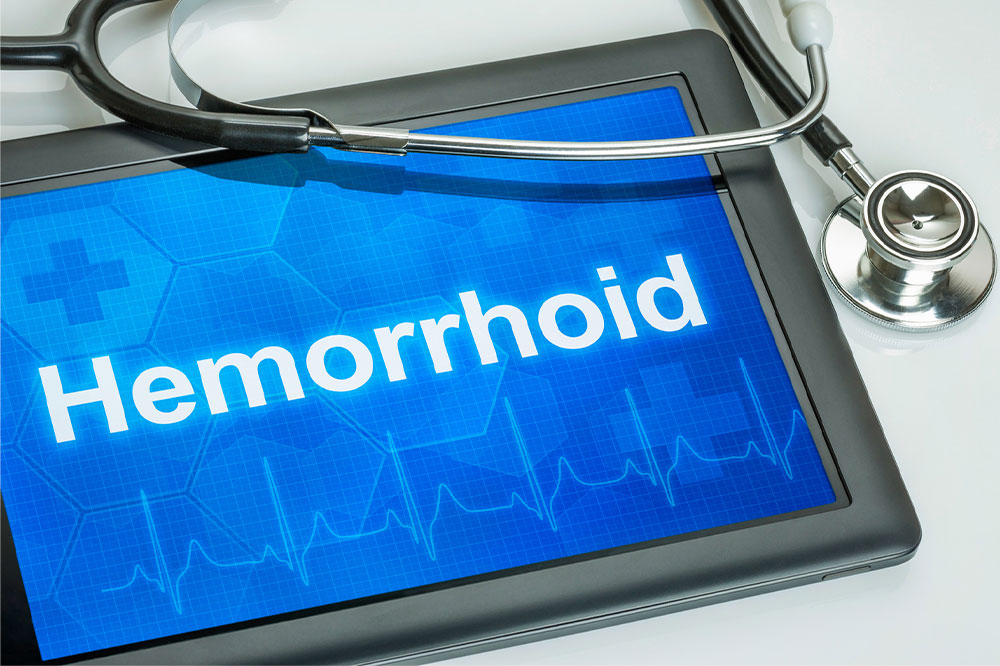
Causes, symptoms, and management of hemorrhoids
Hemorrhoids, or piles, are veins around the rectum or anal area that become inflamed and swollen. The condition is similar to varicose veins and can be categorized as external or internal. External hemorrhoids are more frequent and occur under the skin around the outer part of the anal area, while internal hemorrhoids develop inside the rectum or within the anal area. Some common causes, symptoms, and treatment options are listed below.
Causes
Although doctors do not fully understand the reasons why hemorrhoids appear, certain factors may contribute to their occurrence, including:
Pregnancy
During pregnancy, the tissues in the rectal area may weaken, and hormonal imbalances can cause the veins to swell up. This condition may lead to the development of hemorrhoids in pregnant women.
Aging
Generally, hemorrhoids are observed among those above the age of 50 years. But, in some cases, younger adults and children can also develop this condition.
Diarrhea
Chronic diarrhea can cause swelling and inflammation of veins in the rectal or anal area leading to hemorrhoids.
Chronic constipation
In cases of chronic constipation, there is intense pressure on the wall of the bowels and the blood vessels during stool movement. When this happens repeatedly over time, it can result in hemorrhoids.
Sitting for too long
Hemorrhoids can also develop when a person spends a lot of time sitting. For example, they sit on the toilet for a long time daily.
Low-fiber foods
Having a low-fiber meal can cause constipation and hard stools, which makes it challenging to have a bowel movement. This can also put pressure on the blood vessels in the rectum and anal area, leading to the development of hemorrhoids.
Heavy lifting
Lifting heavy objects frequently or regularly can cause hemorrhoids.
Genetics
Sometimes, hemorrhoids develop through genetics, such as when a close family member such as a parent, grandparent, or sibling has it.
Symptoms
The signs of hemorrhoids generally depend on the type. However, some of the symptoms are the same.
Signs of external hemorrhoids
External hemorrhoids develop over the skin outside of the anal area. These can be observed and felt while sitting or doing any activity that pulls at the skin’s surface.
- Irritation or itching in the anal region
- Discomfort and pain in the Pain or discomfort
- Swelling around the anal area
- Bleeding
Signs of internal hemorrhoids
Internal hemorrhoids develop within the rectal area. These can’t be seen or felt. So there is rarely any discomfort. However, the symptoms may be observed when passing stools.
- Bleeding without pain during bowel movements. There might be a small amount of blood in the stool or toilet.
- Pain and irritation when the stool has to pass through hemorrhoid developed near the anal opening.
Signs of thrombosed hemorrhoids
Hemorrhoids of this type occur when blood accumulates around the external hemorrhoids, forming a thrombus clot in that area. This condition can cause the following symptoms.
- Severe pain
- Swelling
- Inflammation
- A hard lump near the anal area
When to consult a doctor
If the bleeding continues for more than a week or the hemorrhoids don’t go away even after following home remedies for a week, it is time to consult a primary care doctor. There should be no delay in going into emergency care if there are changes in the bowel movements or changes in the color and consistency of stool accompanied by experiencing lightheadedness or dizziness.
Treatment options
Usually, hemorrhoids go away on their own. Following a few simple measures can help in taking care of the symptoms. But sometimes, prescribed treatment options and surgery may be needed.
Measures to take at home to alleviate symptoms
- Topical creams and ointments: There are OTC creams for managing external hemorrhoid symptoms such as discomfort, itching, and swelling.
- Ice packs and cold compresses: When applied to affected areas, these can help alleviate pain.
- A sitz bath: An easy way to relieve pain and discomfort is to take a sitz bath, which involves sitting in a hot tub.
Nonsurgical treatment options
- Rubber band ligation: This treatment for internal hemorrhoids involves the placement of an elastic band at the base of hemorrhoids to cut off the blood supply. As a result, the hemorrhoids will fall off or shrink in size.
- Sclerotherapy: This procedure involves the transfer of a liquid in the internal hemorrhoid. A scar develops, blocking off the blood supply to the hemorrhoids. So it shrinks in size and falls off.
- Infrared photocoagulation: The heat from infrared light is used to treat internal hemorrhoids.
- Electrocoagulation: A low electric current is passed through a hemorrhoid to create scarring. The scar blocks the blood supply causing the hemorrhoid to shrink and fall off.




